Mirrors have become one of the smartest multitaskers in today’s backyards, able to make a snug courtyard feel twice its width, steer sunlight onto shade-loving plants, and even act as living art when teamed with water, mosaics, or vines. When chosen with weather-proof materials and installed at safe angles that won’t blind neighbors or endanger birds, a garden mirror is both practical and surprisingly inexpensive—some trending arched designs now cost as little as £12 while premium stainless-backed options shrug off sea spray for years. Below you’ll find twenty focused ideas, each crafted to spark imagination and deliver clear, actionable tips you can try this weekend.
1. Arched Window-Pane Garden Mirror Extends Your Pathway
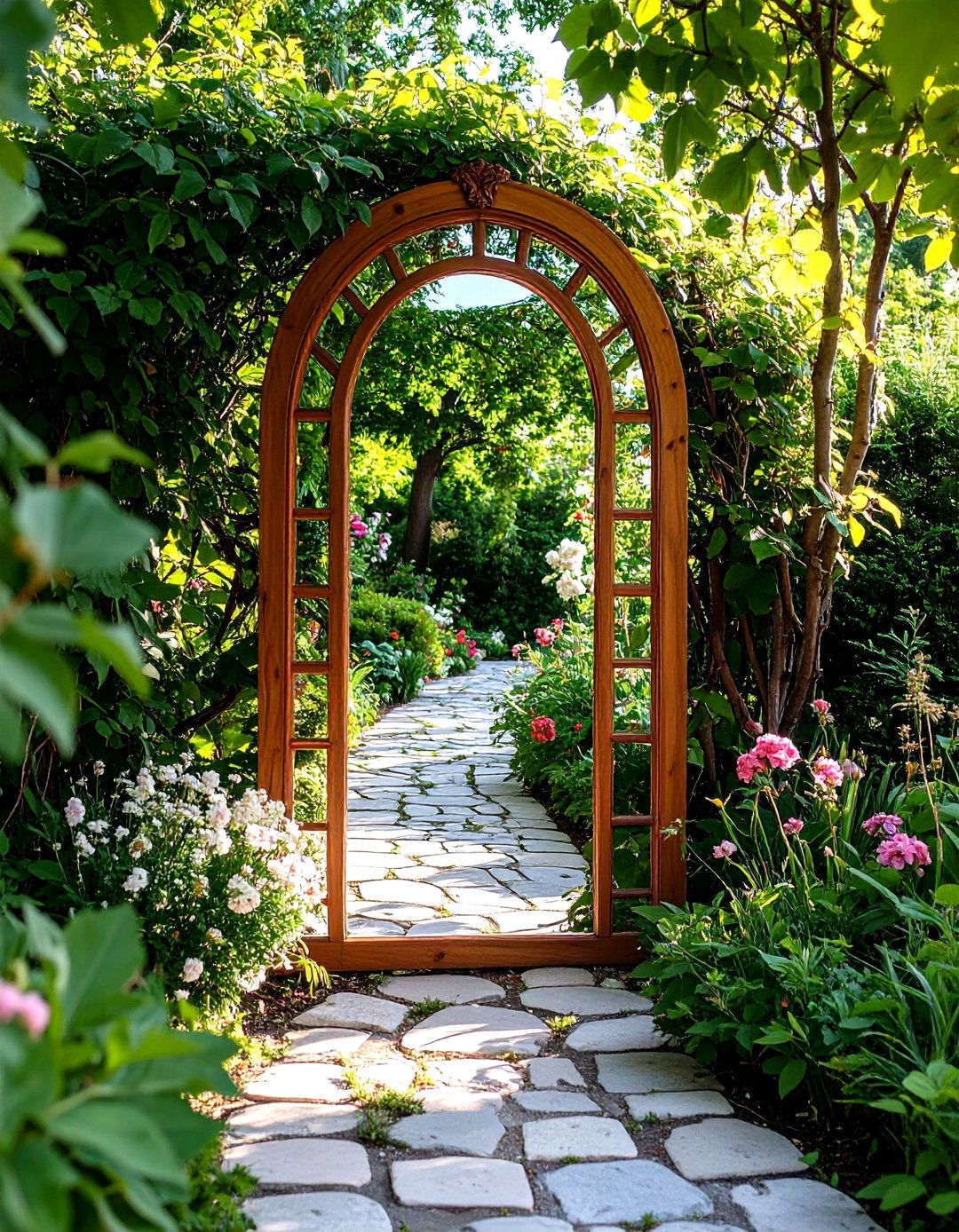
A sweeping, arched garden mirror styled like a Georgian window tricks the eye into believing a hidden gate lies beyond the wall. Position the frame so its muntins align with an existing path; this continuation line deepens perspective and instantly enlarges even a cramped patio. Opt for pressure-treated timber or powder-coated steel so moisture won’t swell the frame, and leave a two-centimetre gap behind the glass for drainage. Budget shoppers can replicate the look with lightweight PVC versions that retail under £15 and still deliver the sought-after illusion of depth.
2. Mosaic Garden Mirror Becomes Living Artwork
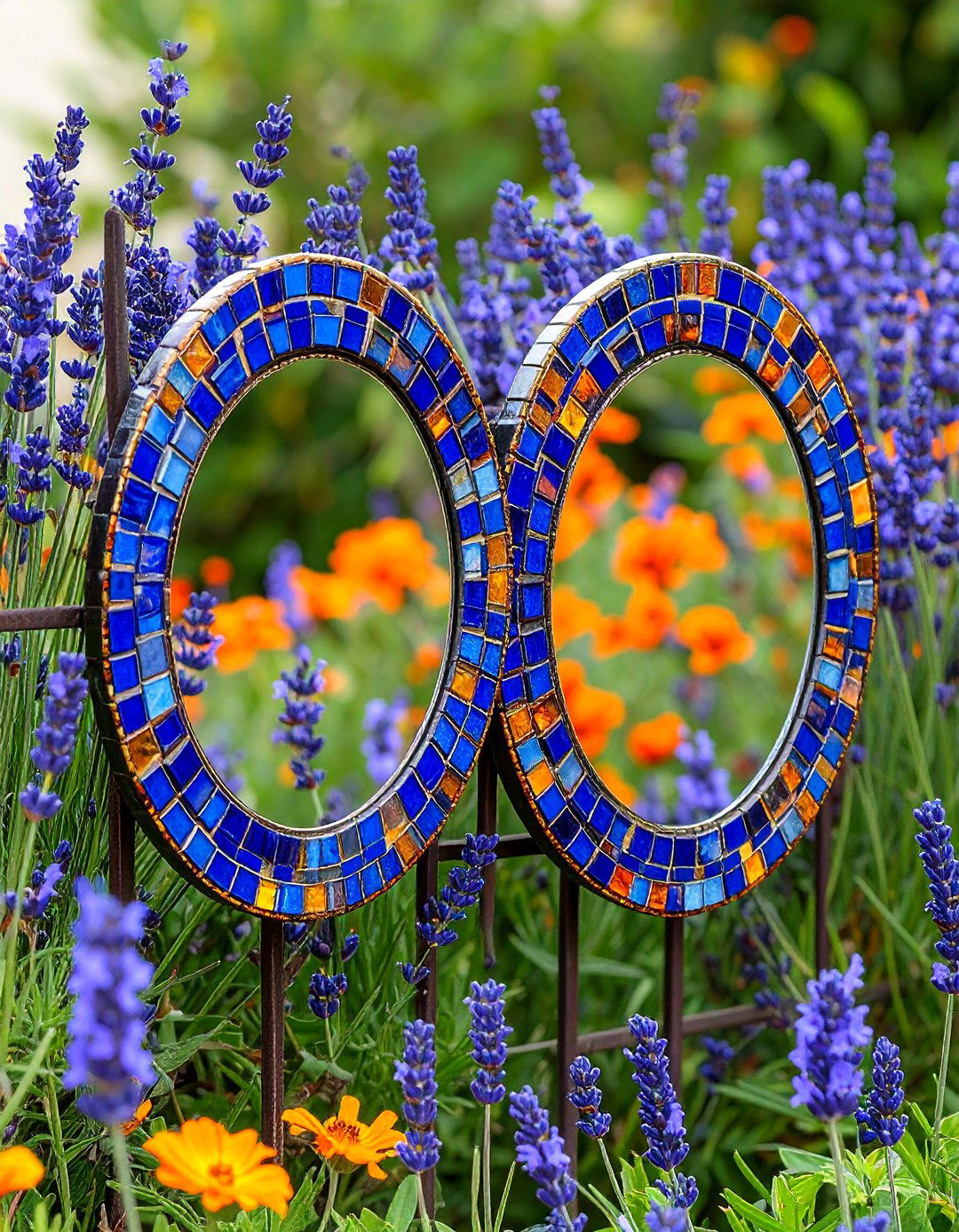
A brightly tiled mosaic garden mirror transforms a blank fence into a shimmering canvas that changes with every cloud and bloom. Choose mirrored tiles no larger than 1 × 1 cm; the extra grout lines break reflections into glittering fragments that mesmerise without confusing birds. Use exterior-grade thin-set mortar and a flexible, UV-resistant grout sealer so frost can’t pop tiles free. Try echoing border colours from nearby perennials—lavender, terracotta, or sage green—to knit mirror and planting into one cohesive scene. For beginners, pre-mounted tile sheets from craft suppliers let you skip hours of scoring glass while still achieving high-impact sparkle.
3. Convex Garden Mirror Adds Playful Depth and Better Sightlines
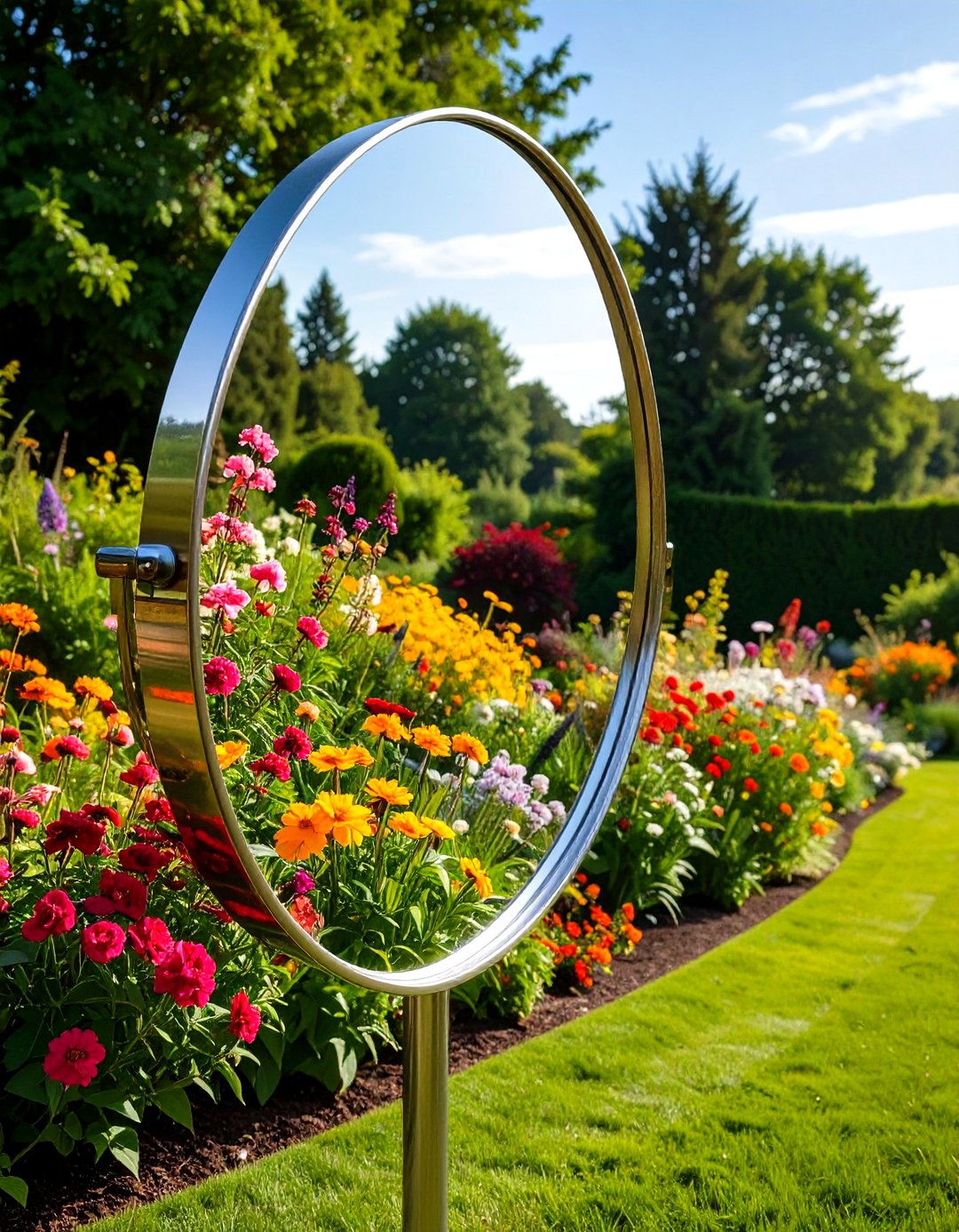
A round, convex garden mirror—originally designed as a driveway safety aid—creates a funhouse bubble view that makes tight courtyards feel softly inflated. Mount the stainless-backed acrylic disc at least 1.8 m high so youngsters can’t accidentally crack it, and angle the bowl slightly downward; this captures beds and lawns rather than sky, reducing bird strikes. Because the mirror is shatter-resistant and comes with adjustable brackets, you can rotate it seasonally to spotlight new focal plants or spotlight a water feature. The wide-angle curve also lets you monitor pets or toddlers around corners without needing a security camera.
4. Upcycled Door Garden Mirror Creates a Vintage Statement
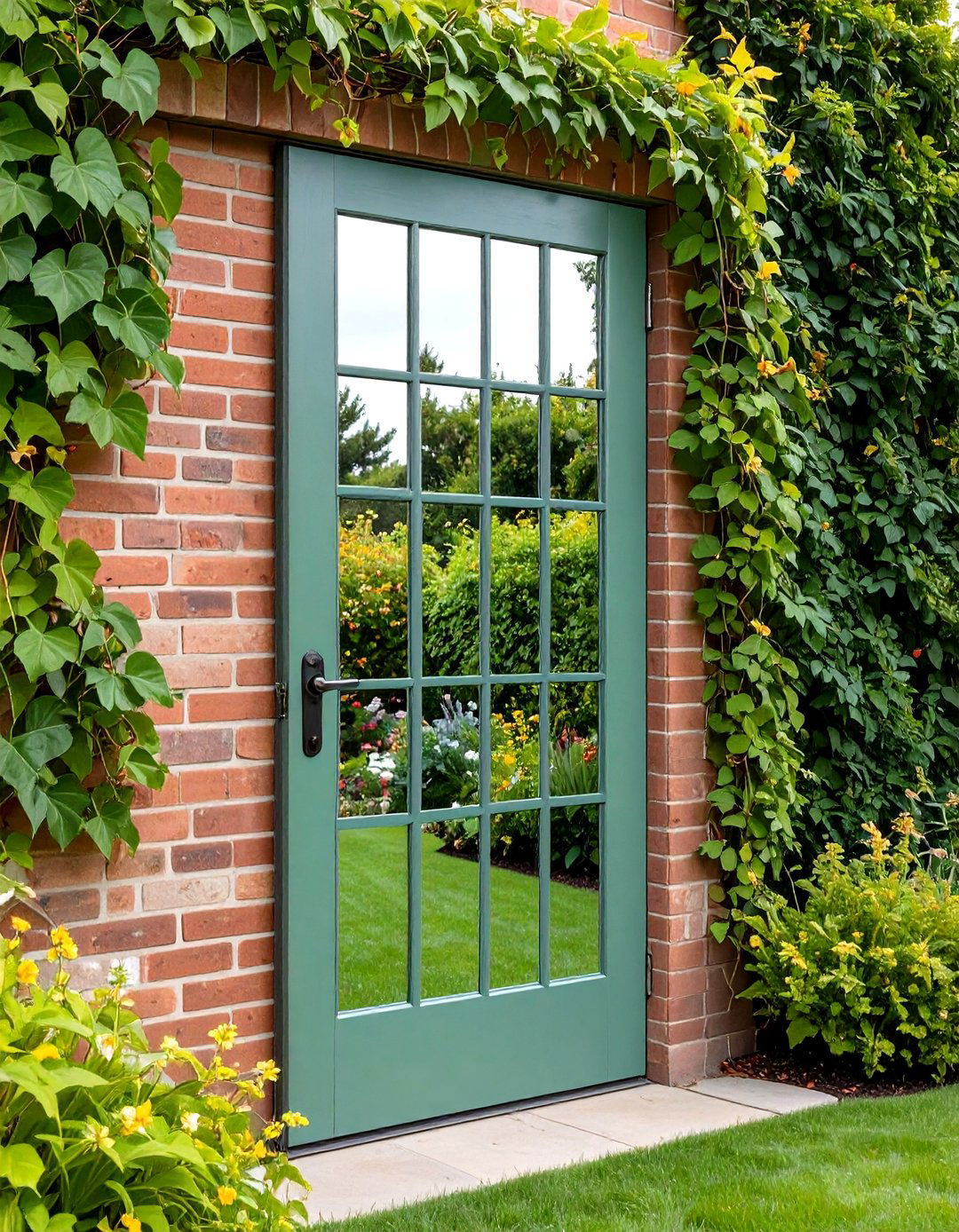
An old panel door reborn as a garden mirror delivers instant cottage charisma. Saw out the upper panels with a jigsaw, fit weather-proof mirrored acrylic in their place, and repaint in chalky sage or cream for a time-worn look. Lean the finished piece against a brick wall and anchor with discreet L-brackets for storms; the tall vertical shape draws eyes upward, making fences seem loftier. Seal any exposed end grain with exterior varnish to stop rot, and add a wrought-iron handle so the “door” feels convincingly functional even though it never opens.
5. Sunburst Garden Mirror Radiates Focal Energy

Stylish indoor sunburst mirrors adapt beautifully outdoors when built from rot-resistant cedar spokes radiating around a 40 cm circular mirror. The spoke pattern throws dramatic shadows that migrate throughout the day, so hang it on the dullest wall to create kinetic art. Coat both wood and glass edges with marine polyurethane; this seals the fine capillaries where water usually creeps in. For extra punch, stain alternate rays in charred shou-sugi-ban black—a finish that naturally preserves timber—and leave others natural for contrast. The result is an affordable showstopper costing little more than scrap wood and an afternoon’s crafting.
6. Mirror Panels Behind a Vertical Garden Multiply Greenery
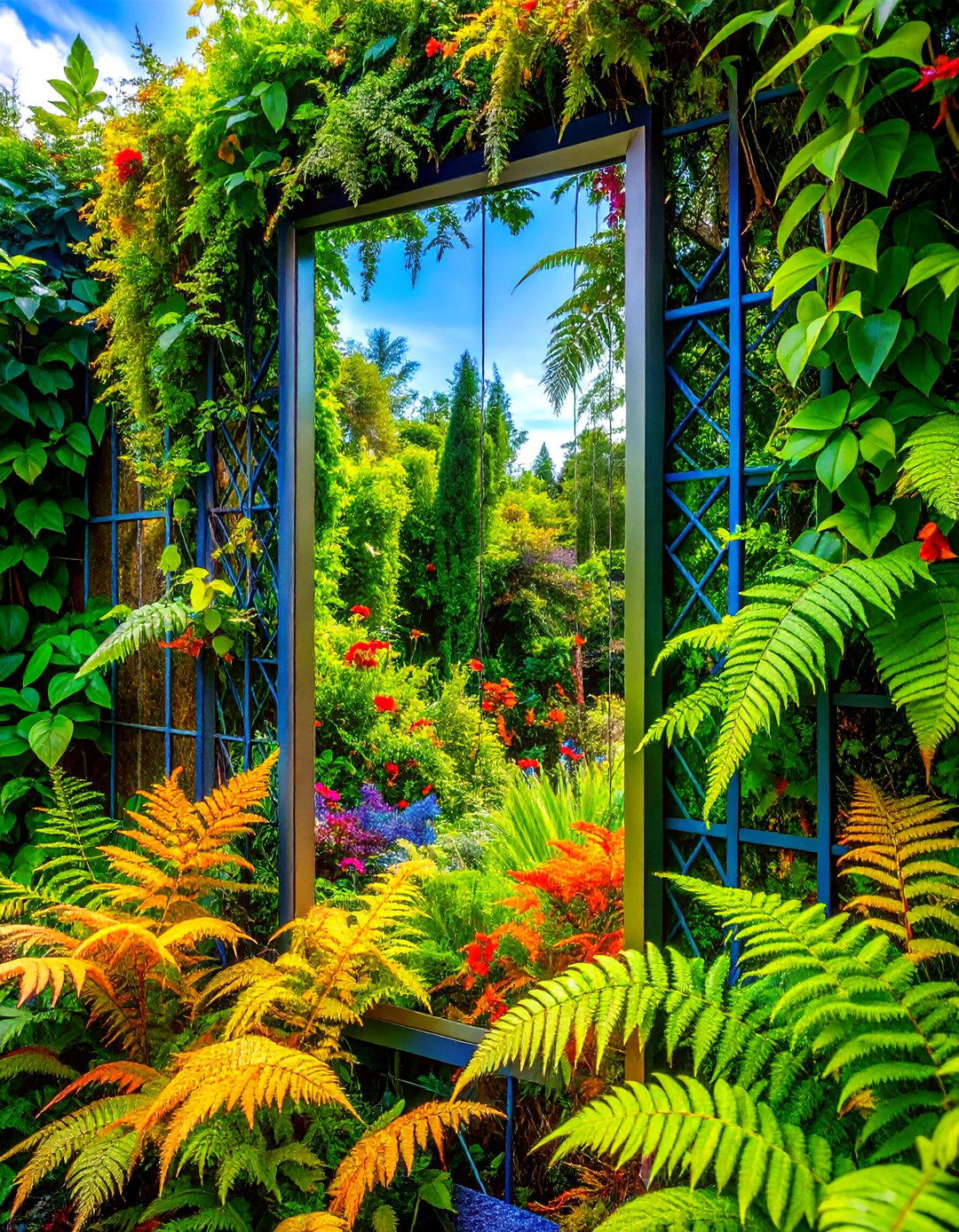
Slim mirror strips installed behind a trellis or modular living-wall pocket make foliage appear twice as lush while hiding irrigation pipes or support grids. Cut acrylic sheets to the trellis width, leave a 3 mm breathing gap for expansion, and fasten with stainless washers so they can flex without cracking. Because the reflection intensifies light, cluster moisture-loving ferns at the base to balance any heat build-up. The doubled greenery also disguises the mirror, so visitors only notice the effect, not the hardware—ideal when you want subtle magic rather than an obvious reflective object.
7. Frameless Garden Mirror Doubles a Water Feature
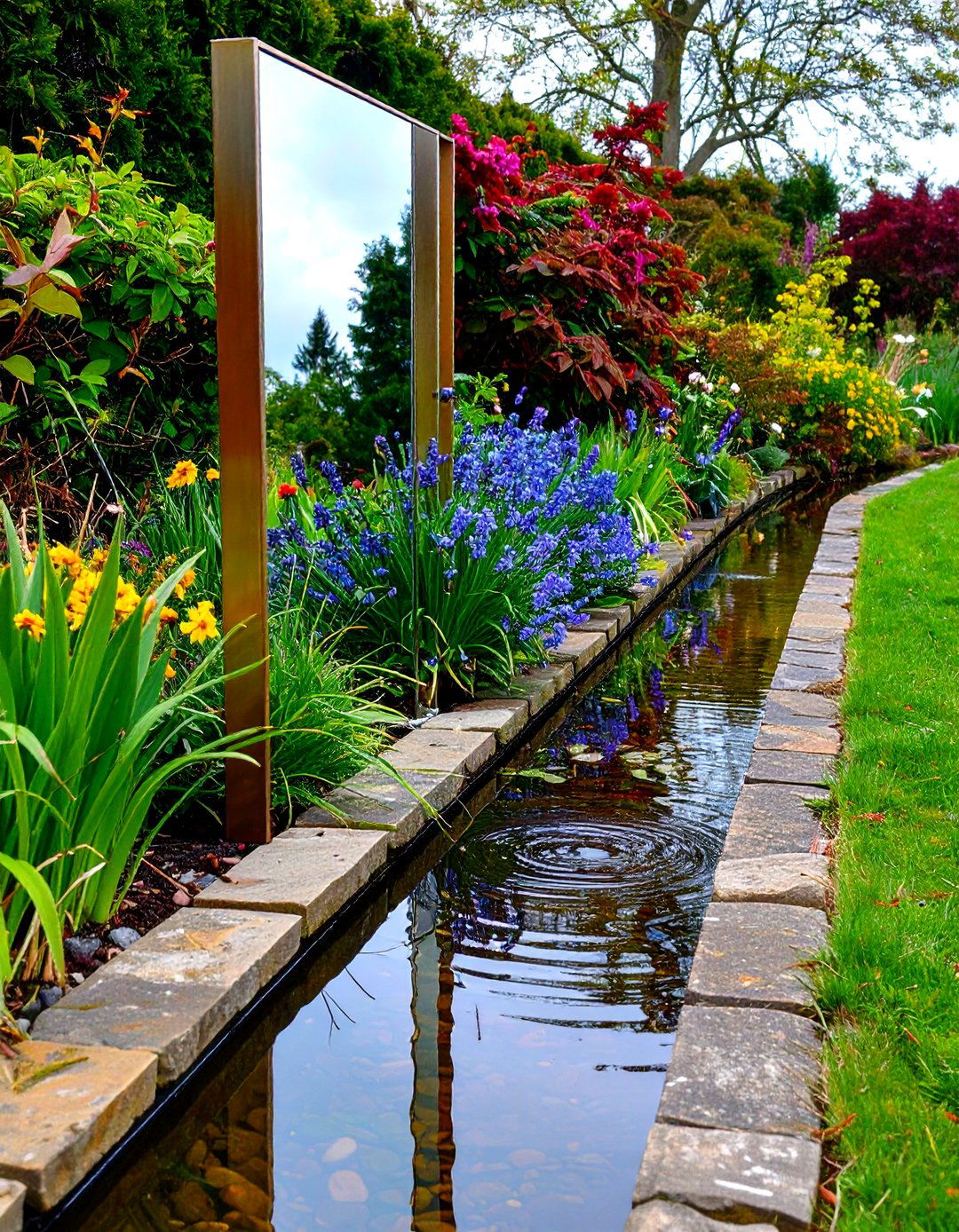
Dropping a frameless, polished-edge garden mirror directly behind a narrow rill or ripple fountain creates the hypnotic illusion of an infinite waterway. Silicone the glass onto a marine-ply backboard sealed with epoxy, then slot the assembly into a channel cut in the coping stone so pond-cleaning splash never seeps behind. Keep the mirror vertical; even a slight lean risks focusing sunlight and scorching foliage. When night falls, a small submersible light turns the mirrored surface into a ribbon of dancing reflections that amplify every ripple for a resort-style vibe at pocket-park scale.
8. Mirrored Gazing Balls Scatter Sparkle Among Beds
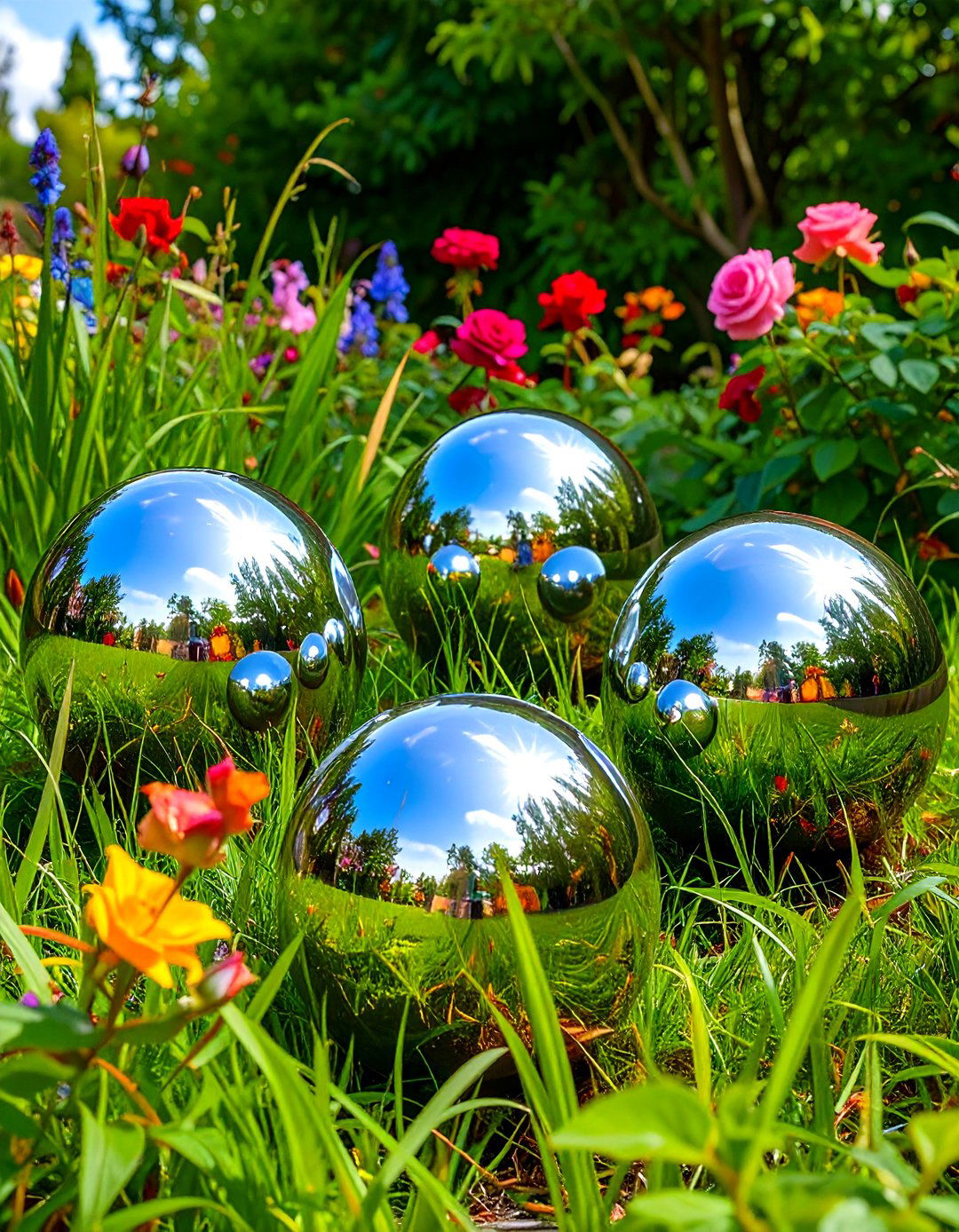
Unlike flat sheets, stainless-steel gazing balls tuck between grasses and roses, throwing hundreds of miniature reflections that feel like twinkling fairy lights on bright days. Cluster three spheres of varying diameters so the eye hops across the planting, or float a single ball in a shallow pond for a modern nod to classical orangeries. Wipe with vinegar water to prevent the hazy bloom that can dull cheaper steel, and bring inside during hailstorms—they’re hardy but not indestructible. Place them where you want to pull attention, such as toward late-season asters after earlier blooms have faded.
9. Full-Length Garden Mirror Lengthens a Narrow Walkway

A 180-cm-tall garden mirror taken from a wardrobe refit can visually punch a cramped side return wide open. Set the base on bricks so rainwater drains under, then recess it slightly into a climber-laden frame so visitors see greenery first, glass second. Paint the frame the same tone as the boundary fence for continuity, and plant fragrant climbers—jasmine or star-anise honeysuckle—nearby so scent, sightline, and sound blend. Because the reflection shows whatever is opposite, keep bins and tools strictly out of view; a mirror ruthlessly doubles every mess as quickly as it doubles space.
10. Mirror-Tiled Stepping Stones Light the Way

Thin mirror off-cuts adhered to large concrete pavers turn an ordinary path into a mosaic runway that gleams at sunset. Use exterior-grade construction adhesive and leave 5 mm grout gaps filled with polymer-modified mortar to flex with temperature swings. Arrange shards randomly rather than in a pattern; irregular reflections help guests gauge depth, preventing slips. A quick spray of matt sealer cuts glare but keeps sparkle. Replace any severely scratched segments every couple of seasons—because they’re only fragments, repairs are easy and inexpensive compared with swapping a whole sheet.
11. Pallet-Framed Garden Mirror Adds Rustic Warmth
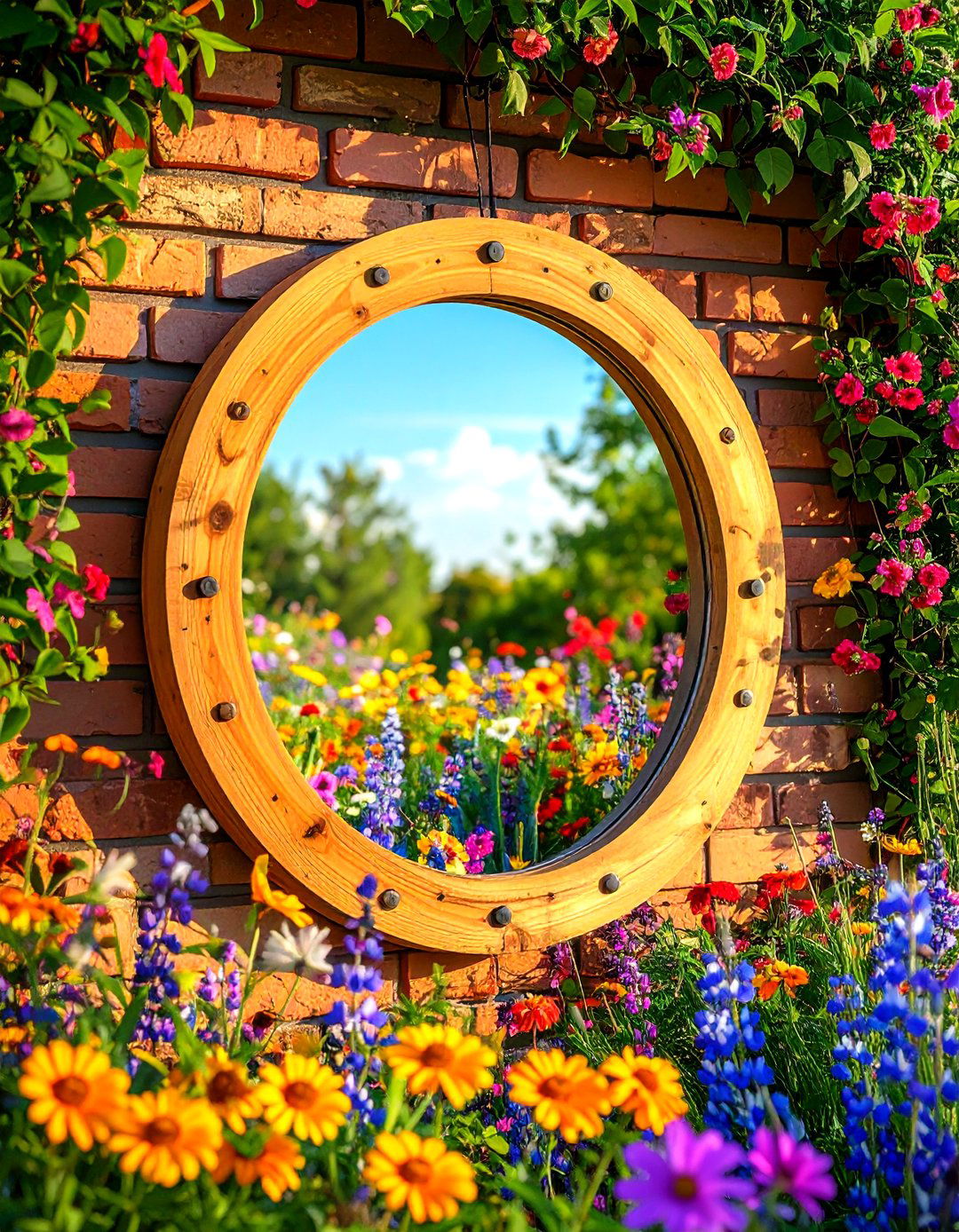
Salvaged pallets yield free, character-rich timber perfect for framing a basic DIY garden mirror. Sand just enough to remove splinters, leaving nail holes and stamps visible for charm. Brush on a translucent outdoor stain so grain shows through, and back the mirror with rigid polystyrene insulation; this cushions glass against knocks when you move planters. Hang from heavy-duty French cleats bolted into masonry, not flimsy picture wire. The mix of raw boards and crisp reflection bridges modern and farmhouse styles, making the piece versatile for future redesigns.
12. Corner Garden Mirror Boosts Light to Shade Lovers
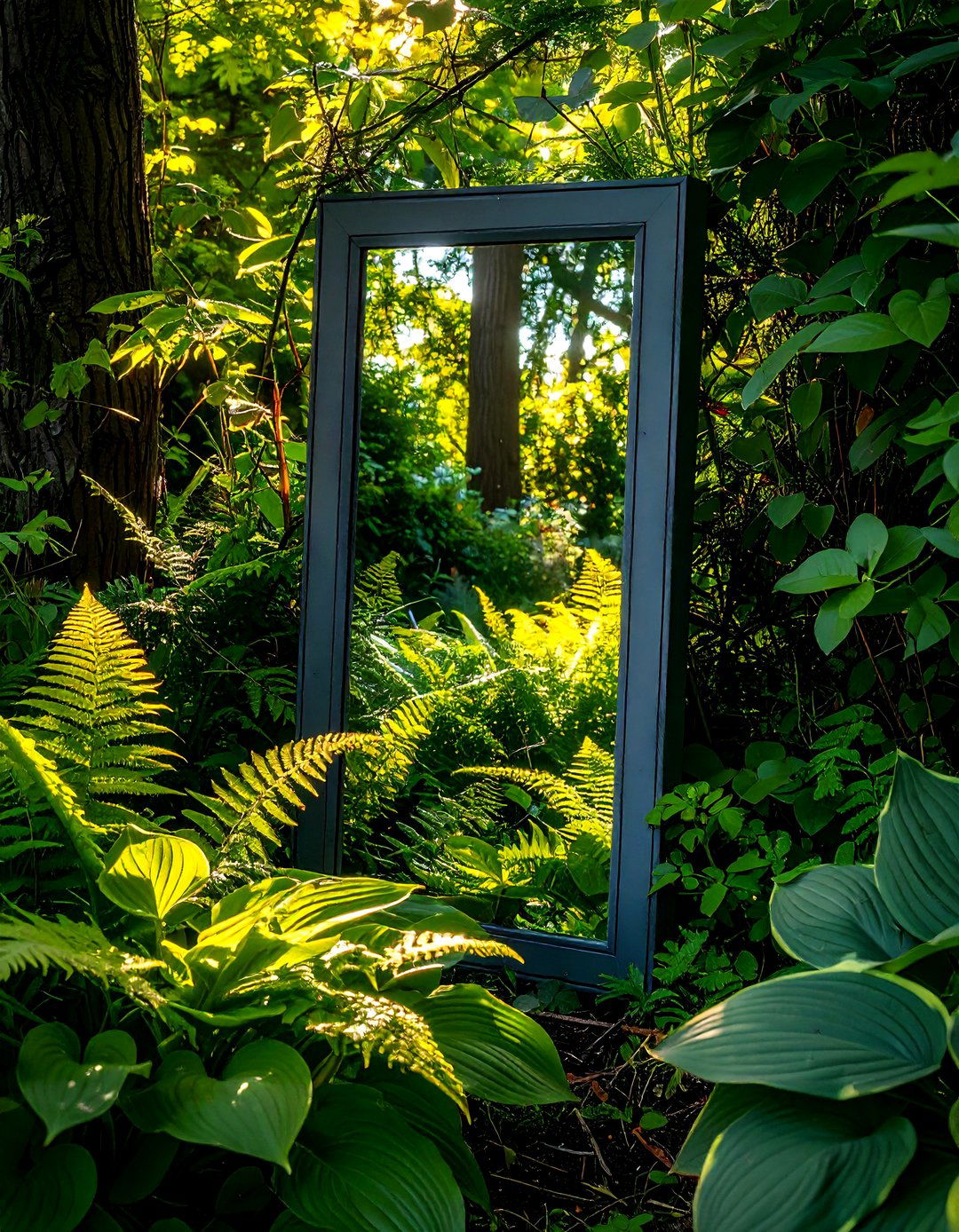
Angles matter: fix a rectangular garden mirror ninety degrees to a dark corner and you’ll bounce morning sun onto shade-tolerant hostas or ferns. A study on indoor plant light confirms even modest redirected illumination supports healthier growth over time. Keep the glass tilted slightly downward so reflected sky doesn’t tempt birds into collision, and paint the frame the same shadowy hue as the wall to let foliage, not mirror, take centre stage. A quick wipe with anti-static spray monthly keeps airborne pollen from dimming the valuable light beam.
13. Trellis Garden Mirror Supports Climbers and Views
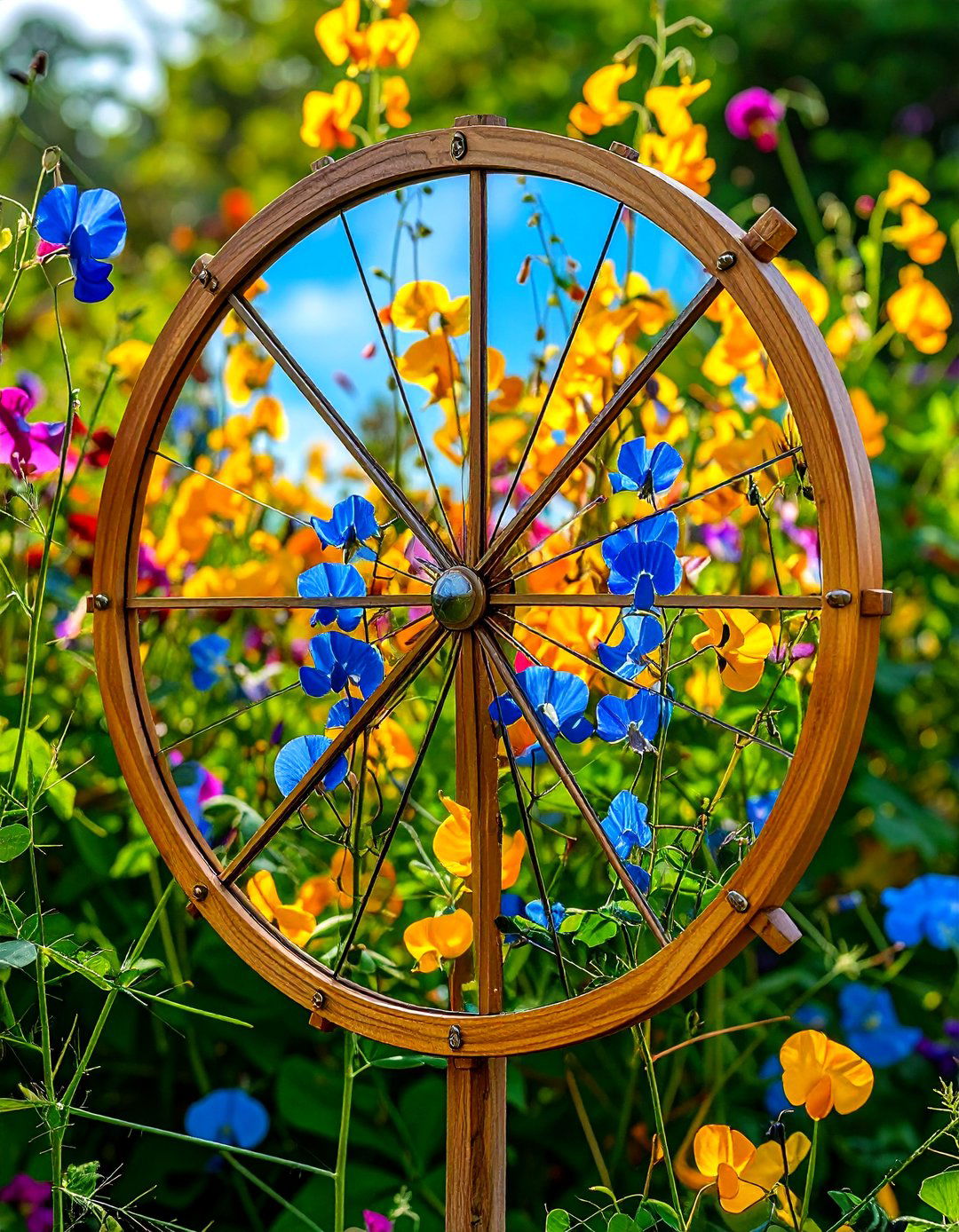
Replacing the “back panel” of a wooden fan trellis with mirrored acrylic delivers two-for-one benefits: it props up sweet peas while simultaneously doubling their colourful display. Use stainless screws with rubber washers so expansion gaps stay watertight, and leave a 5-cm strip of exposed mirror at ground level; this optical “moat” fools slugs that approach by reflection, reducing nibble damage without chemicals. As the vines thicken, the mirror gradually retreats, giving the structure a delightful reveal-and-conceal personality through the seasons.
14. Bird-Safe Angled Garden Mirror Protects Wildlife
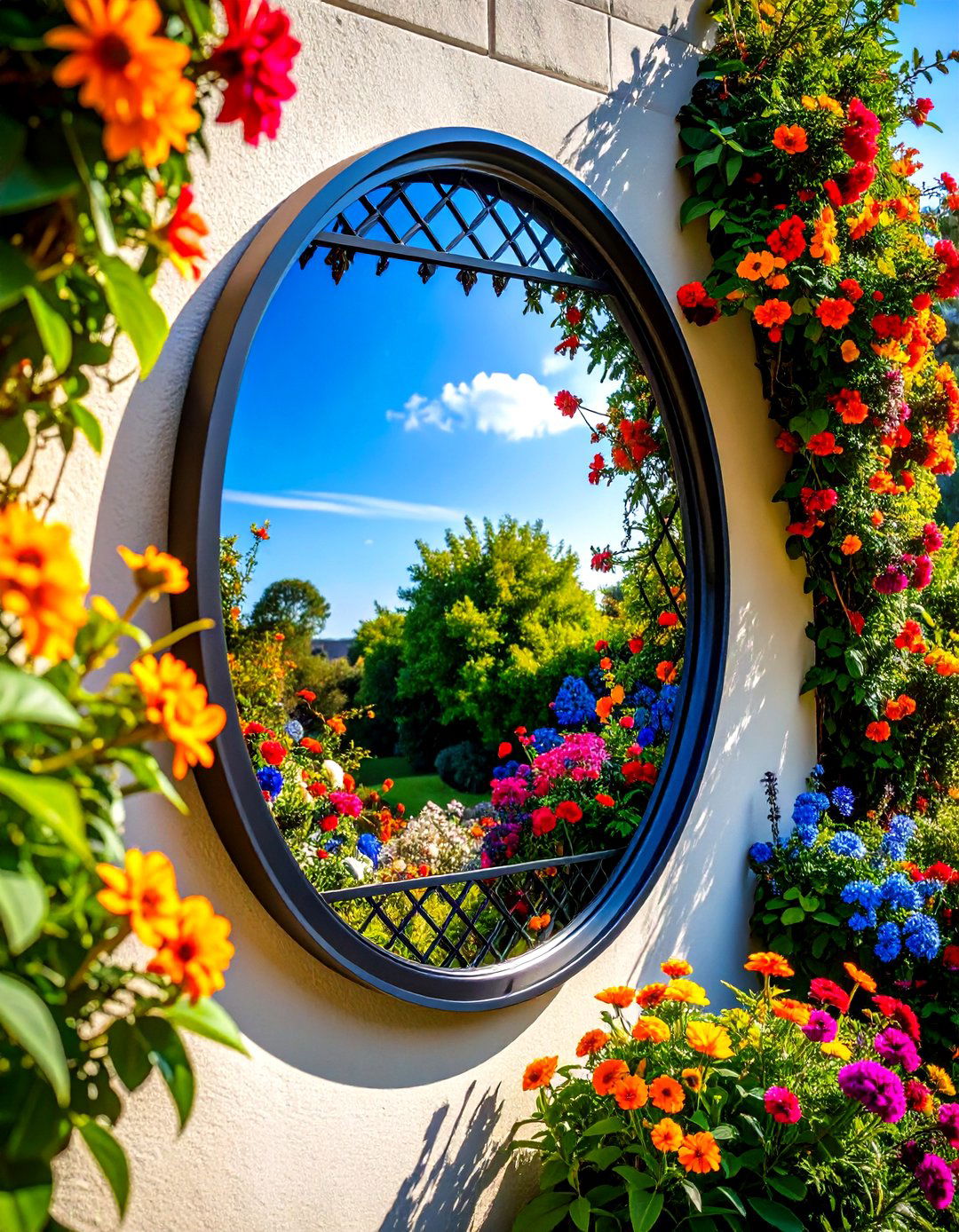
Garden mirrors can injure birds if positioned poorly, so follow experts’ advice and avoid placing them opposite open sky during nesting months. Mount mirrors flush to solid surfaces rather than hanging them like a dangling picture, and tilt them down by 10–15 degrees so reflections show earth, not flight paths. Adding a subtle lattice overlay breaks up the pane just enough for avian eyesight while remaining almost invisible to human viewers. These tweaks let you enjoy extra light and depth without compromising your mini-ecosystem.
15. Multi-Facet Seating-Area Garden Mirror Reflects Social Vibe

Create conversation-piece energy by arranging six bevel-edged hexagonal mirrors around an outdoor sofa in a honeycomb grid. Each facet captures a slightly different angle—fire pit, string lights, laughing friends—so the composite picture feels dynamic, almost cinematic. Use removable exterior command strips first to test layouts, then switch to marine-grade caulk for permanence once you’re sure. Because the sections are small, any future chip means swapping a single tile, not the whole artwork.
16. Stainless-Backed Garden Mirror Withstands Coastal Weather

Salt, wind, and sand can corrode ordinary mirror silvering in months, so coastal gardeners should invest in stainless-backed outdoor mirrors designed originally for commercial sites. The welded rim prevents moisture ingress, and the robust bracket lets you tighten the mirror flat against walls where gusts can’t get behind it. An annual rinse with fresh water is usually the only maintenance needed, making this option a genuine set-and-forget upgrade for seaside decks.
17. Acrylic Garden Mirror for Child-Friendly Play Zones
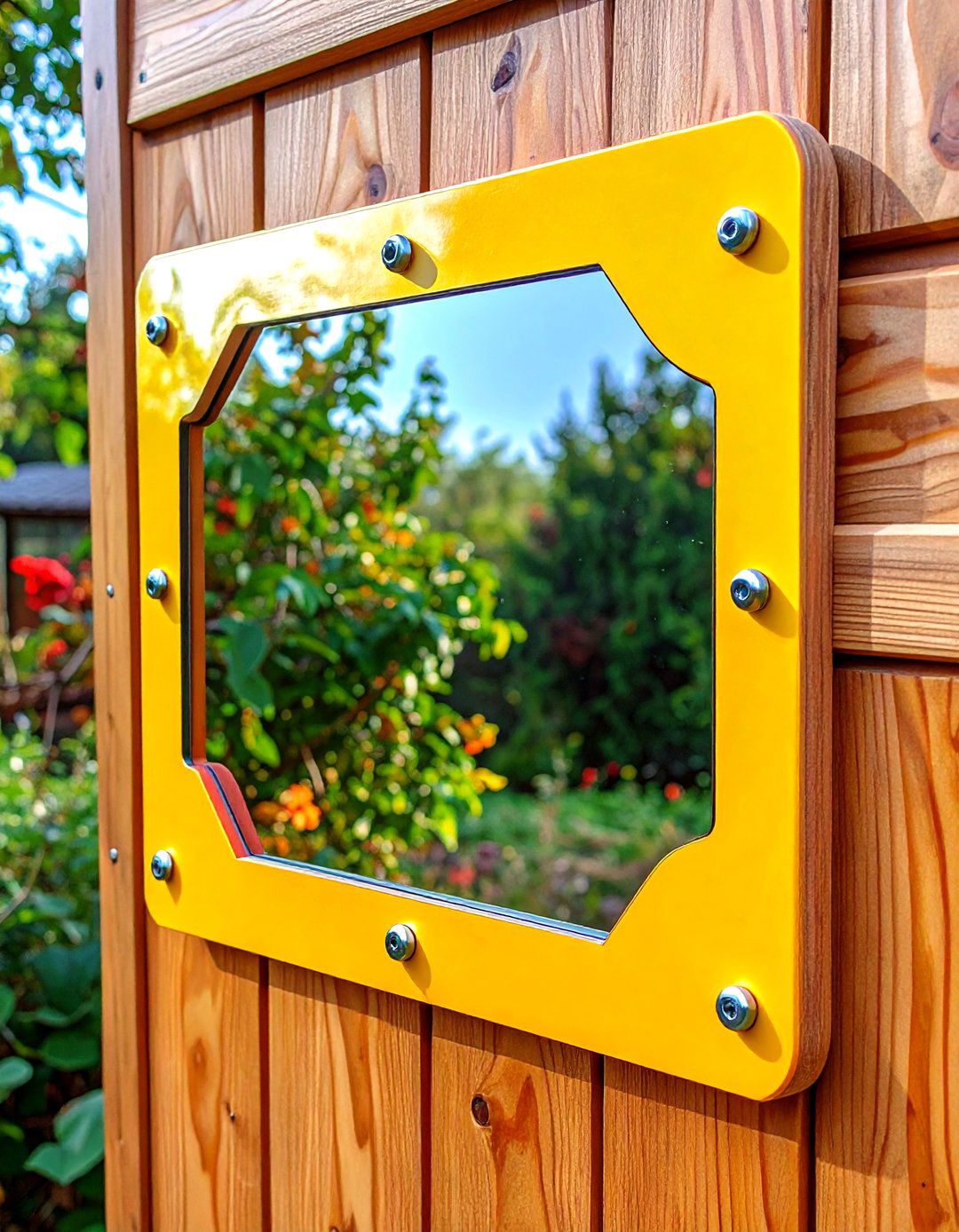
If you’re building a playhouse or mud kitchen, opt for lightweight acrylic or polycarbonate garden mirrors. They weigh about half as much as glass and resist shattering into sharp shards. Screw the sheet to a plywood backing through oversized holes and use rubber grommets so slight flex during rough-and-tumble doesn’t crack the mirror. Kids love drawing washable marker frames or weather-charts around their reflections, adding an interactive STEM twist to outdoor play.
18. Chalkboard-Framed Garden Mirror Tags Plants and Tasks

Combine a slim mirror with a chalk-painted timber surround wide enough to jot sowing dates, fertiliser reminders, or inspirational quotes. The porous matt finish contrasts wonderfully with the mirror’s gloss while offering priceless day-to-day utility. Seal the chalk area with clear, exterior-grade wax so rain wipes clean instead of streaking. Because the frame is tall and dark, it doubles as a backdrop that accentuates pale blooms like white foxgloves or silver Artemisia.
19. Pergola Mirror Canopy Throws Evening Glow
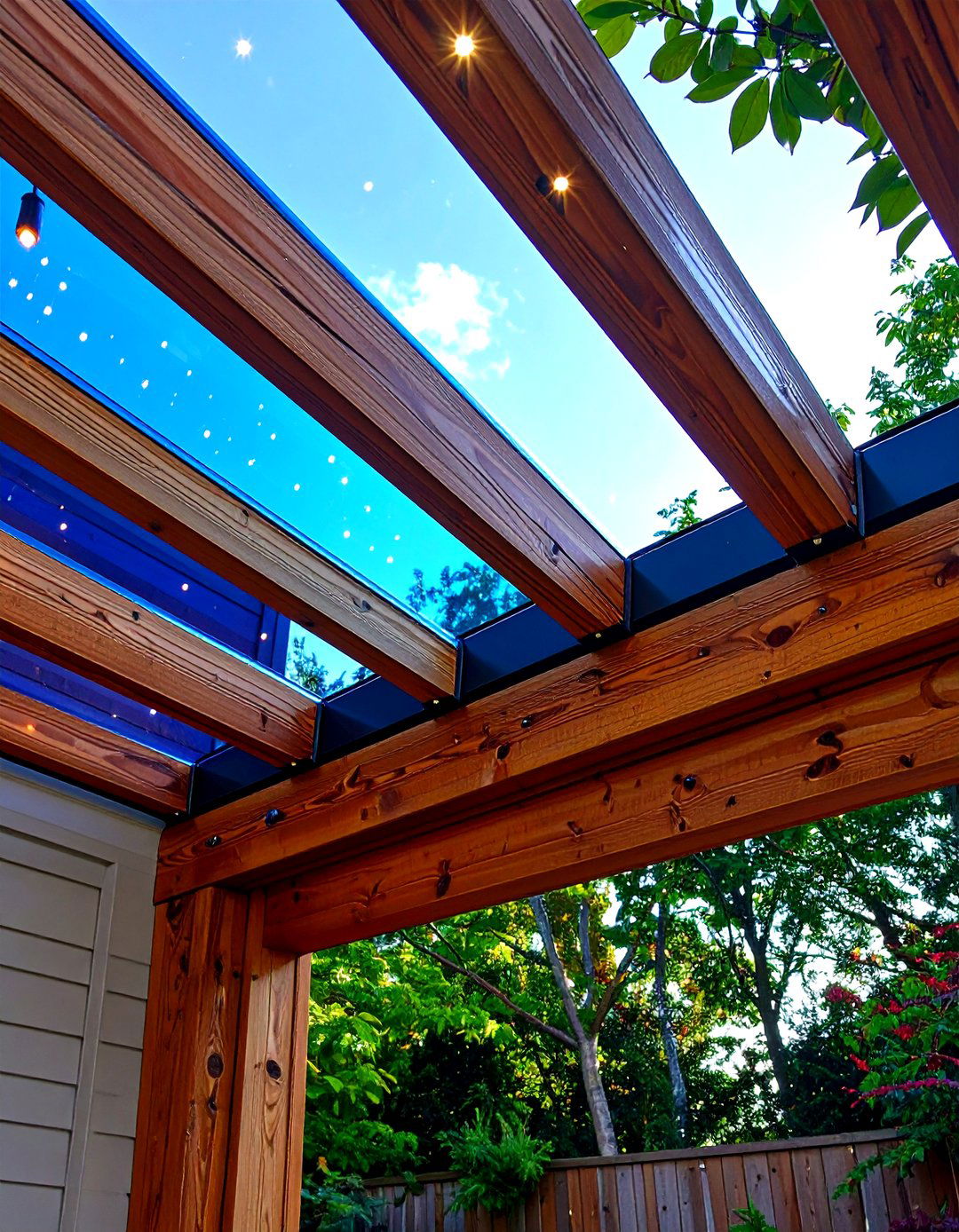
Fixing narrow mirror strips between the beams of a pergola roof bounces candlelight back onto diners’ faces, creating intimate warmth without extra electricity. Use mirrored polycarbonate no thicker than 3 mm to keep weight down, and sandwich each strip under a thin cedar batten so wind can’t catch the edge. Hang solar fairy lights above; their gentle glimmer will refract many times for a starlit ceiling effect. Remove the mirrors during heavy-snow winters to prevent bowing, then reinstall with a cordless screwdriver come spring.
20. Seasonal Film Garden Mirror Shifts Color All Year
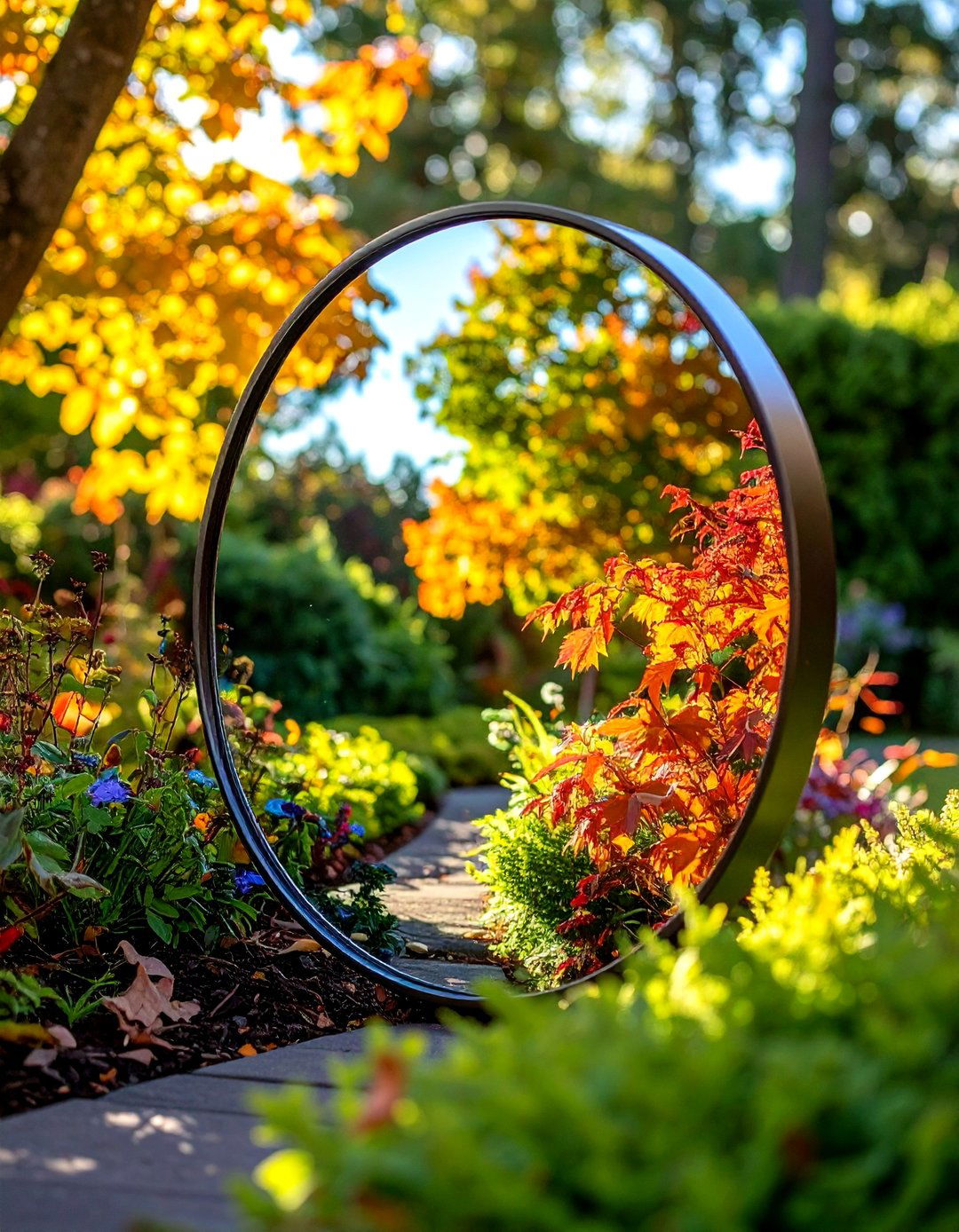
Applying removable dichroic window film to a standard garden mirror lets you swap its mood with the calendar. Spring’s fresh chartreuse morphs into amber come autumn as the sun’s angle changes, giving the impression of constantly evolving art. Clean the mirror thoroughly, mist the film’s adhesive with water and a drop of dish soap, then squeegee smooth for bubble-free clarity. When a new colour palette strikes your fancy, peel off and replace—acrylic sheets make the process easier because they flex, allowing reuse in a different corner of the garden.
Conclusion:
From illusion-rich arches to bird-friendly mosaics, each of these garden mirror ideas proves that reflection is more than vanity; it is a practical design tool for light, depth, and delight. Choose materials that suit your climate, angle panes to avoid wildlife collisions, and remember that even a pocket-sized shard can reshape perception when placed with intent. Whether you go budget with PVC or invest in stainless backs, the right garden mirror turns spare walls into living vistas that keep your outdoor space fresh through every season.



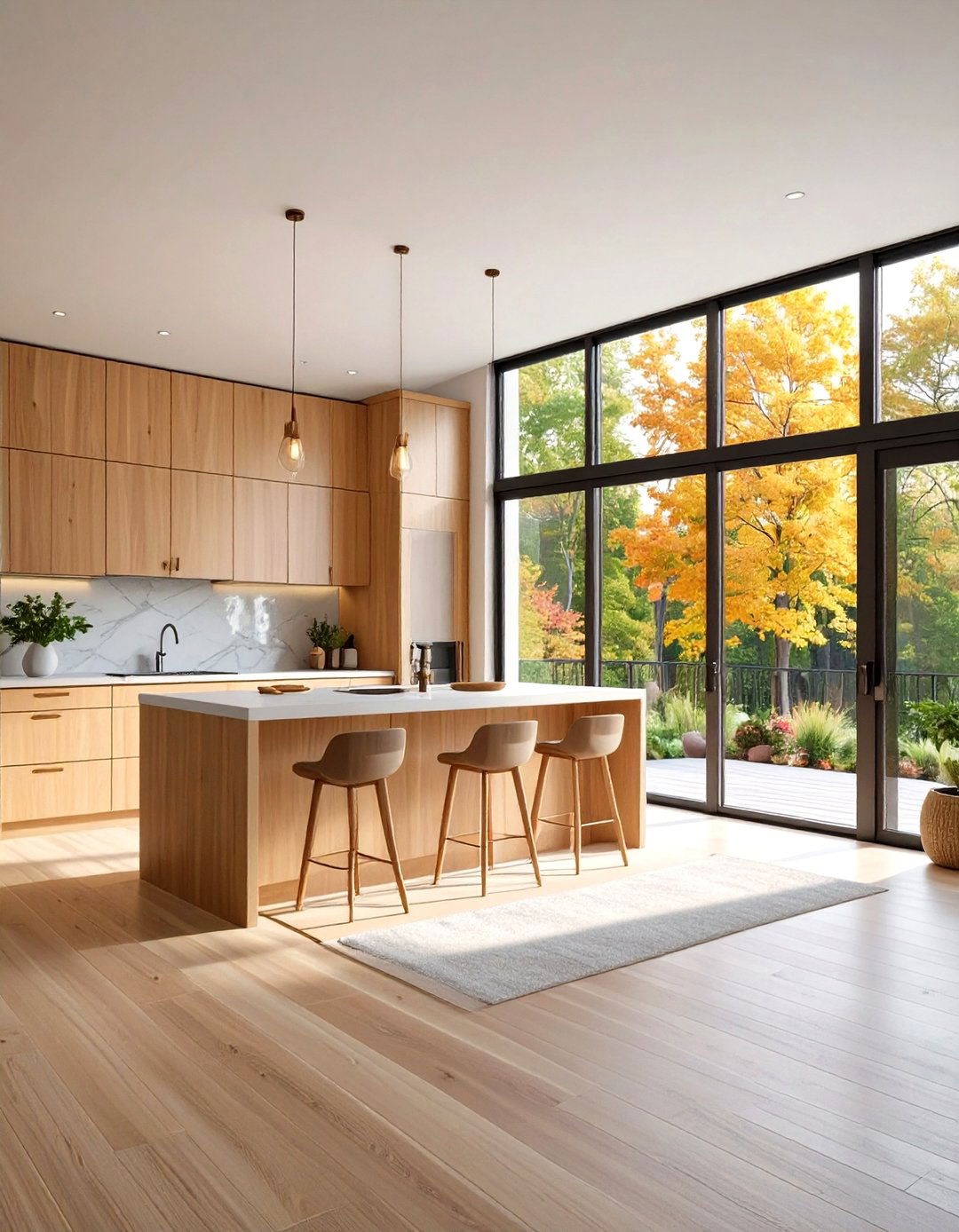
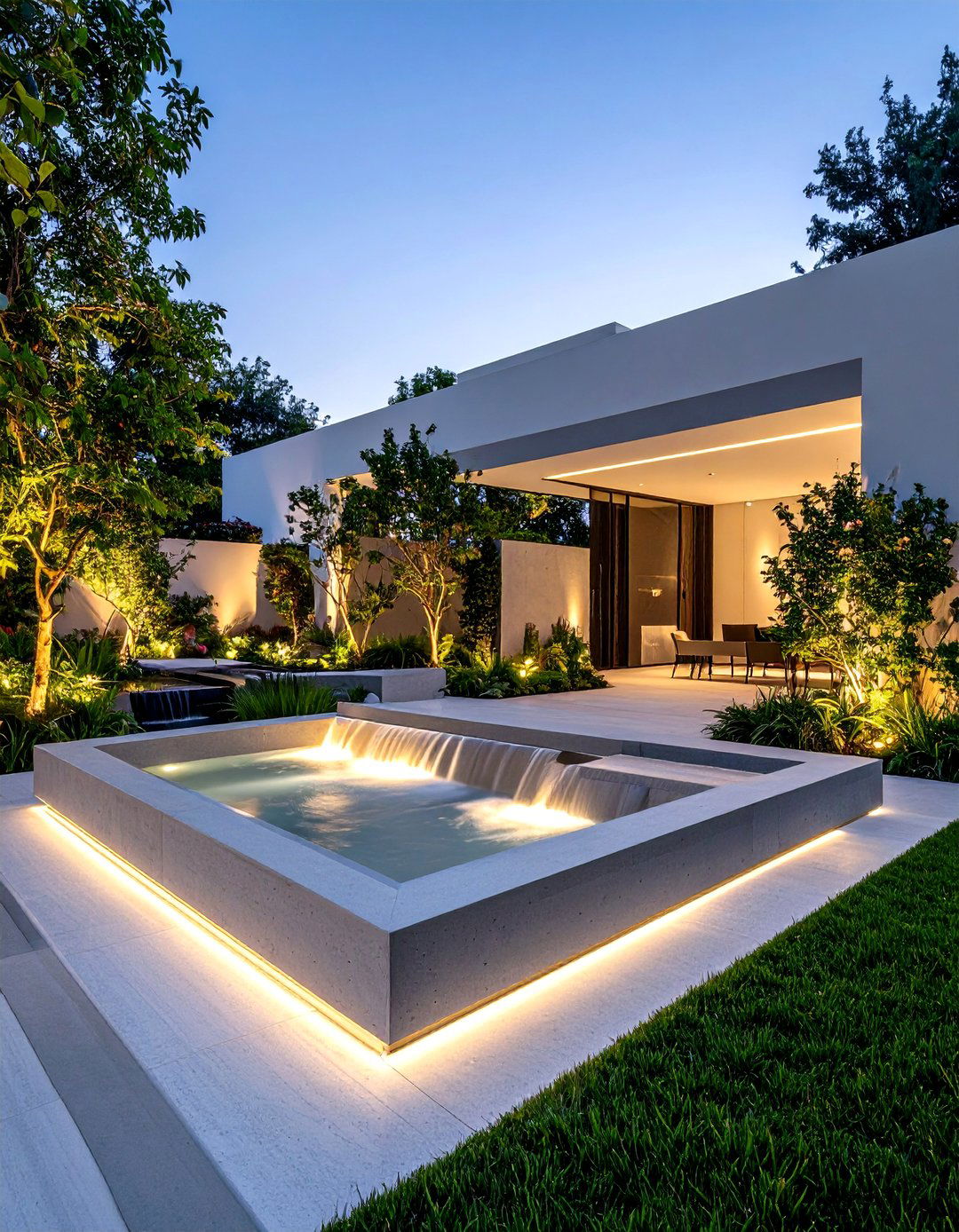
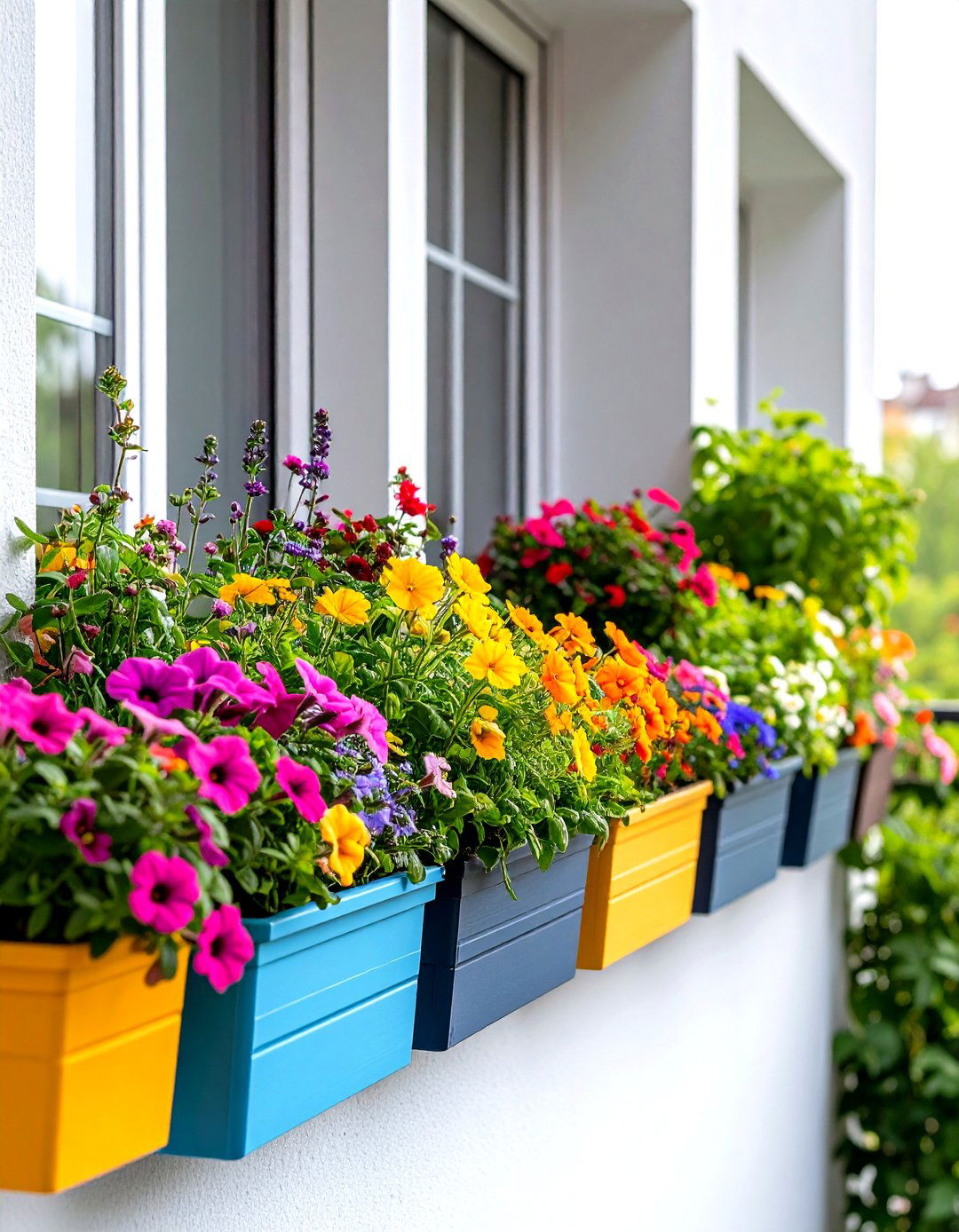
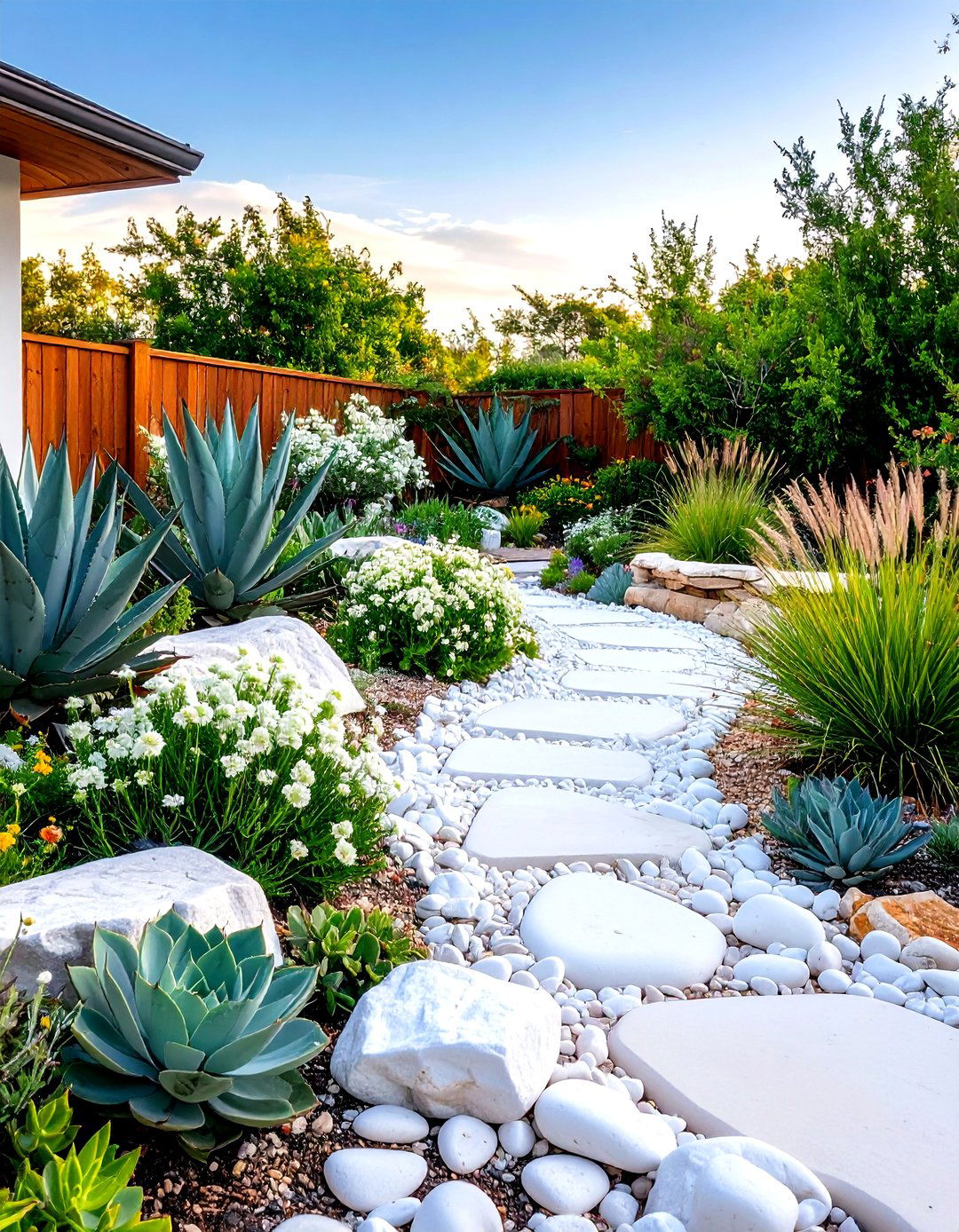

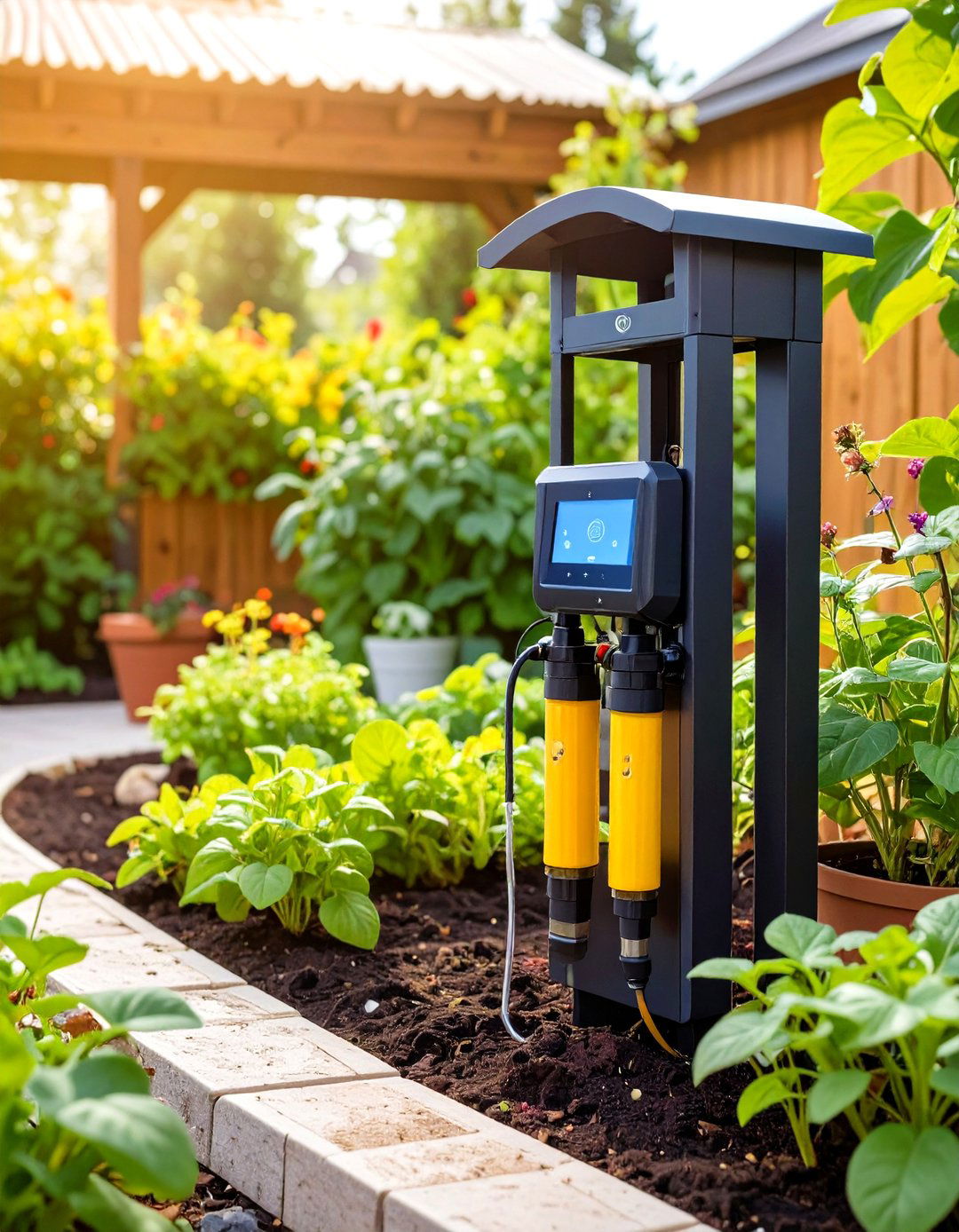
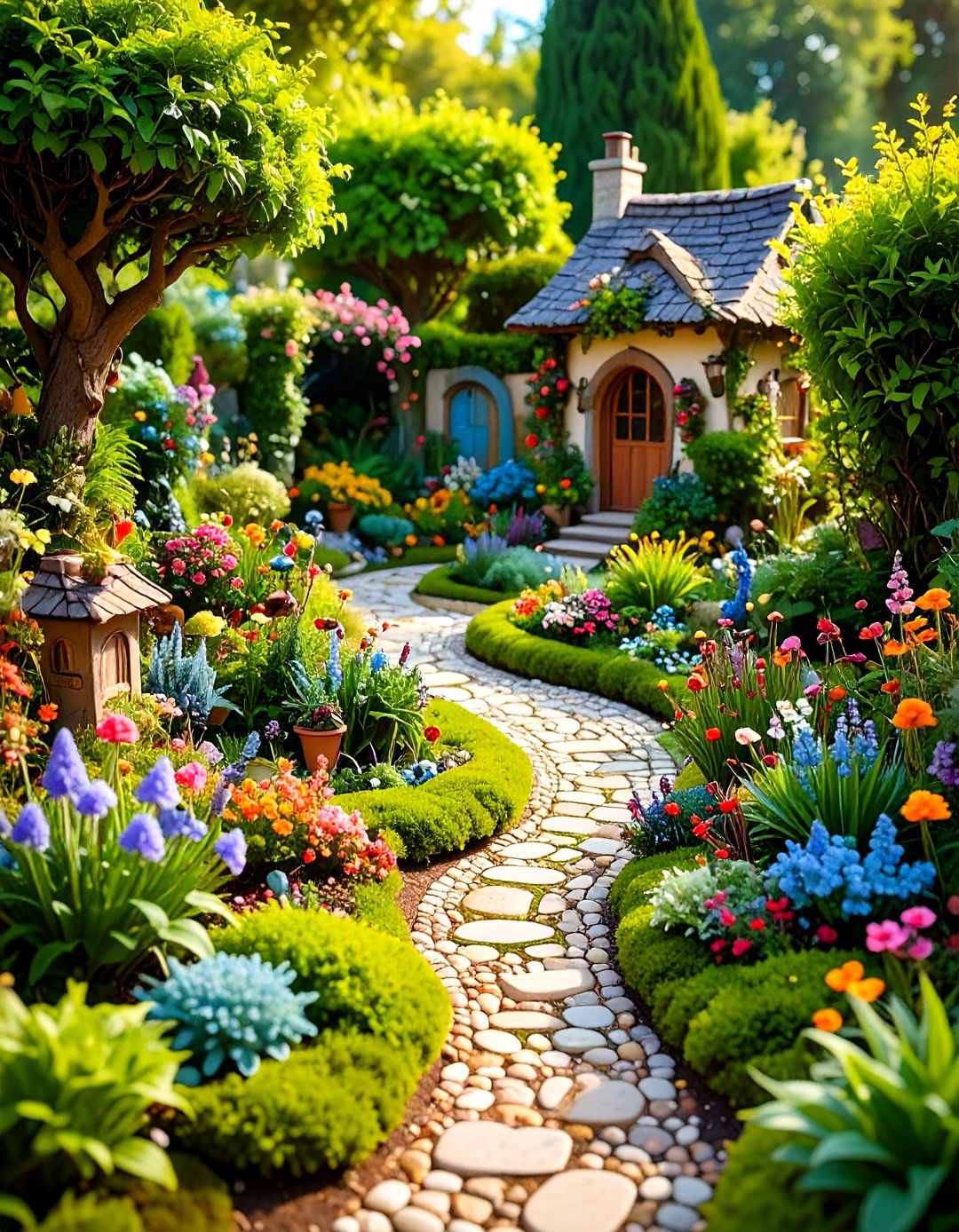
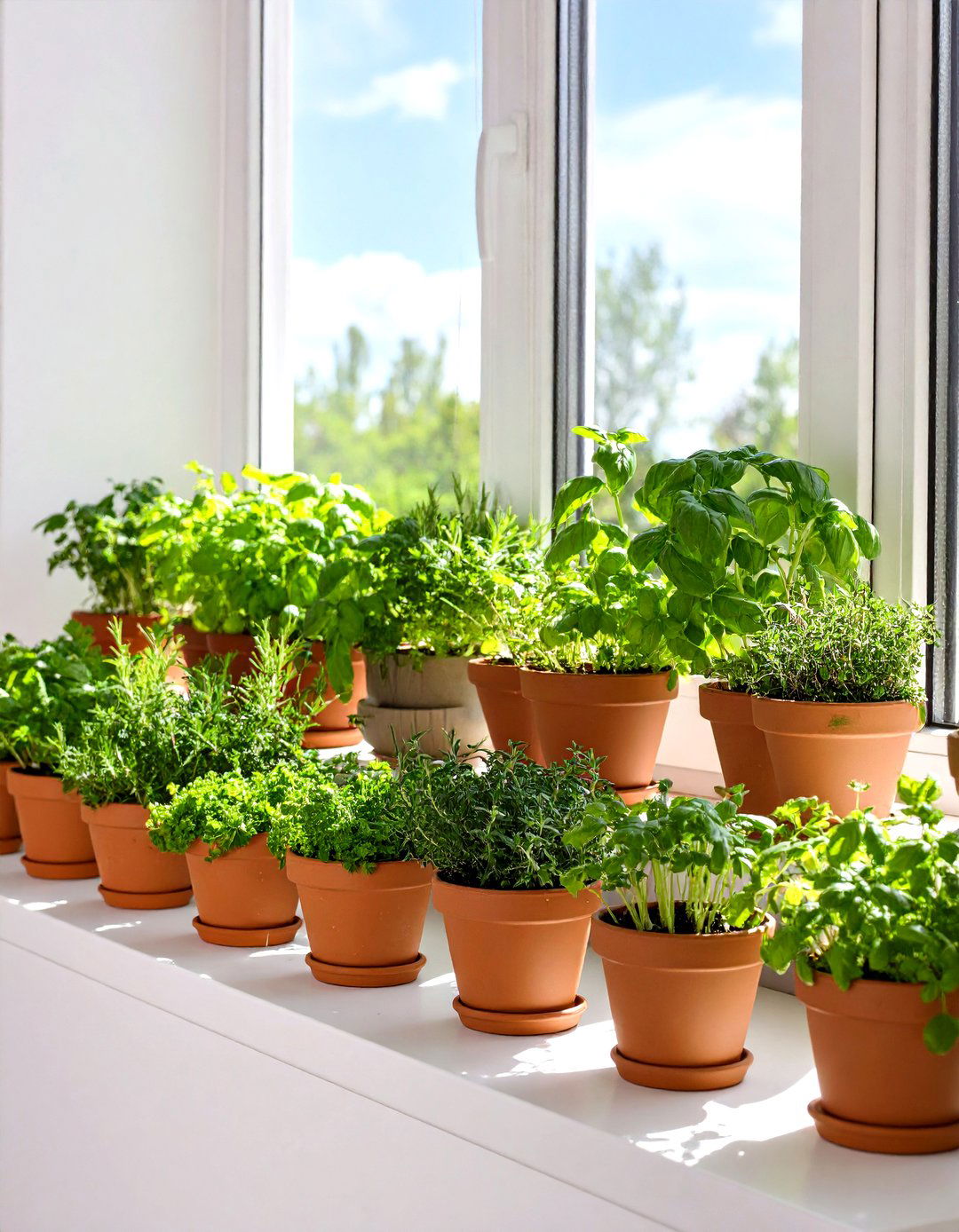
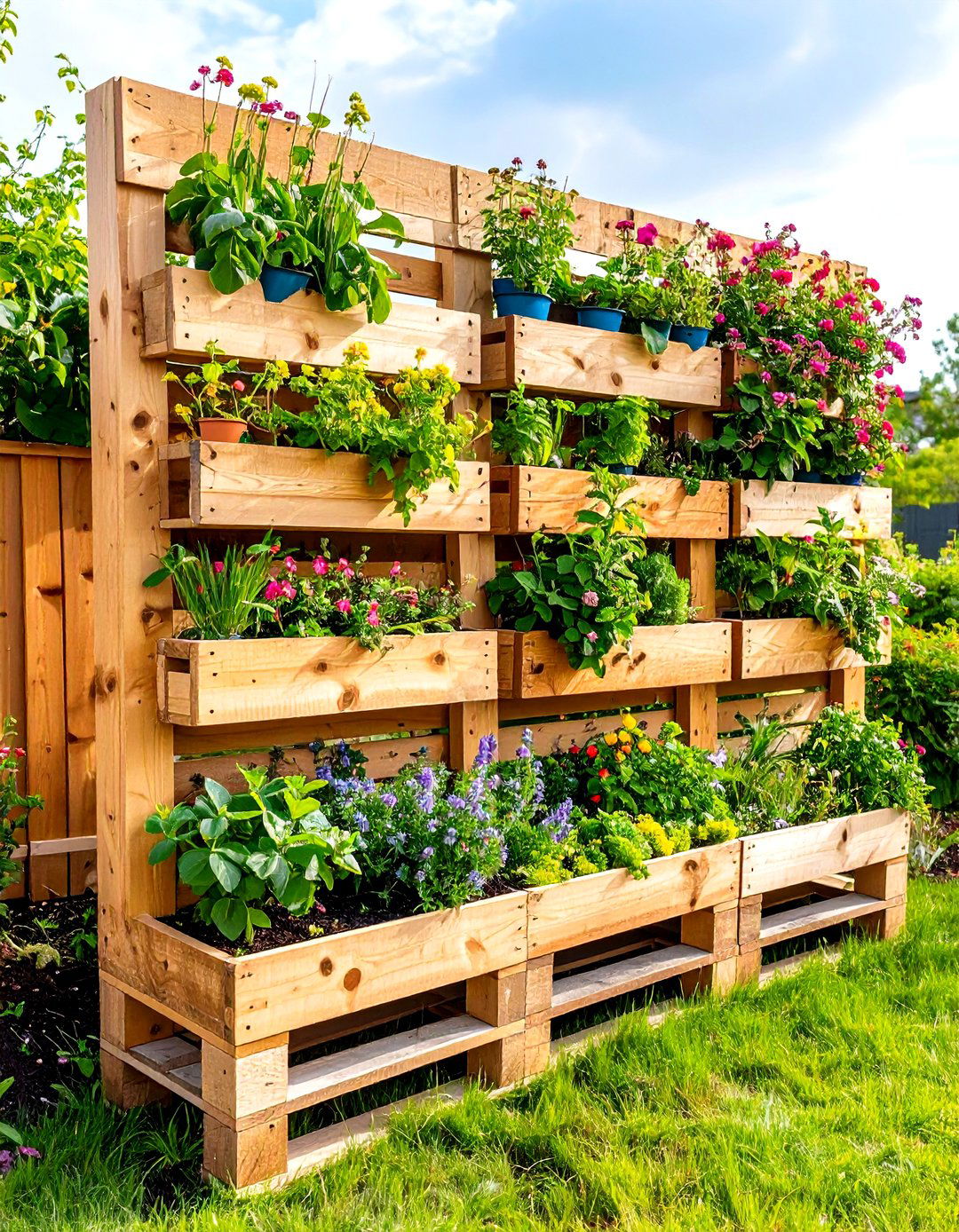

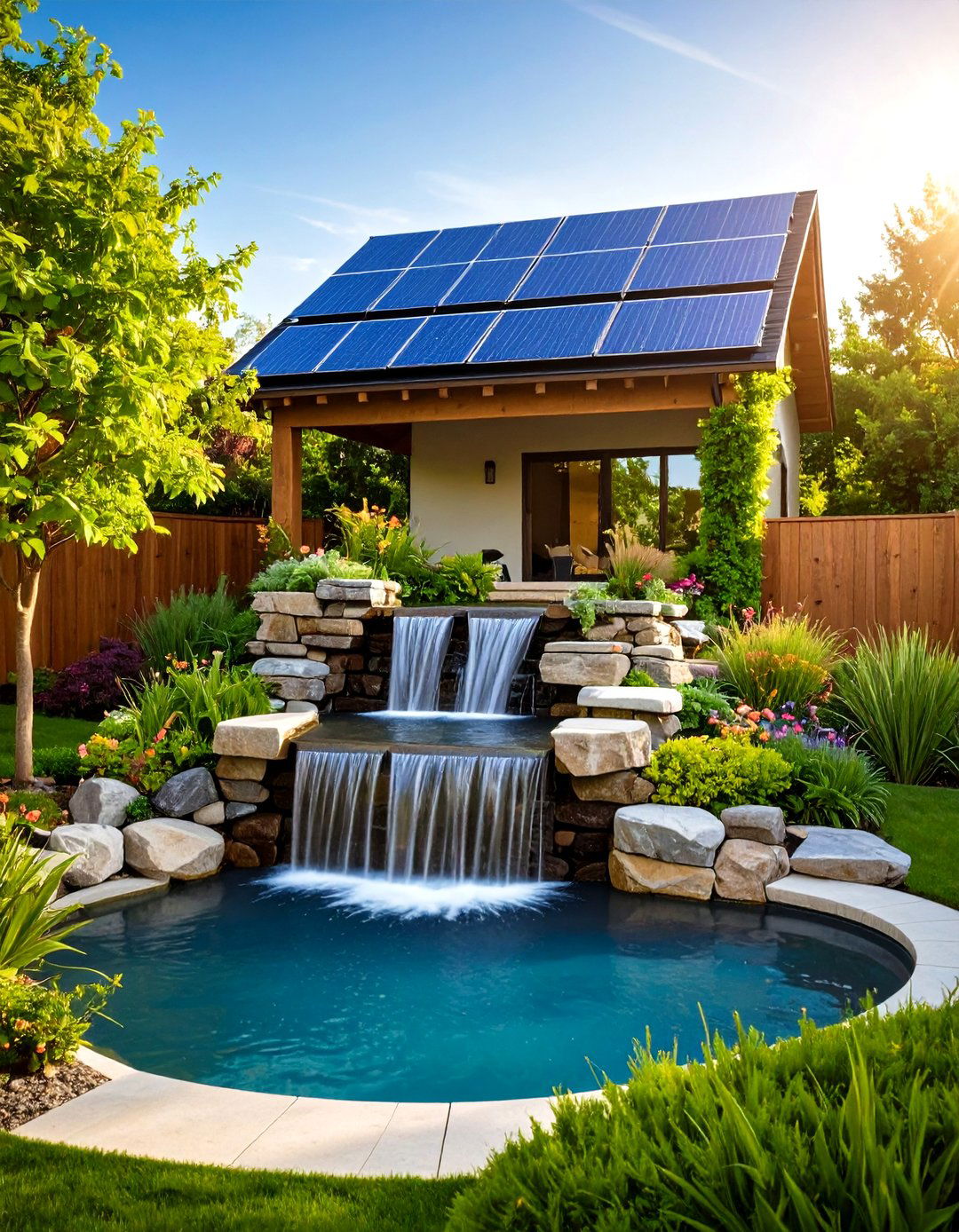
Leave a Reply